Review of the Day: The Funeral by Matt James
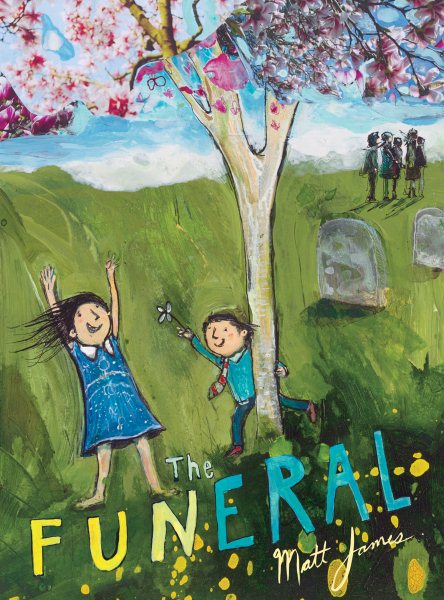 The Funeral
The Funeral
By Matt James
Groundwood Books (an imprint of House of Anansi Press)
ISBN: 978-1-55498-908-9
$18.95
Ages 4-7
On shelves now
They say you don’t truly fear death until you have children. I’ll tweak that slightly. I say, you don’t truly fear talking about death until you have children. At least if you’re an American. The other day I brought home the classic German picture book Duck, Death, and the Tulip by Wolf Erlbruch and found, to my consternation, that I didn’t really want to read it to my seven and four-year-old. 21st century parents are remarkably agile contortionists when it comes to avoiding discussing difficult topics with our children, and I include myself in that statement. The Erlbruch book is going to be read to my kids at some point, but before that happens I found something to take me just a baby step in the right direction. In spite of its title, The Funeral by Matt James isn’t really about death. Death is there. It’s present. Be kind of weird if it wasn’t. But this is a book about life in its purest sense: where kids get bored in church and then get out their energy on green lawns doing somersaults in the hot sun.
When the phone call came, telling her mother that her great-uncle Frank had died, Norma soon found out that she wouldn’t have to go to school on the day of the funeral. And even better? Her favorite little cousin Ray would be there as well. At the church Norma kills time during the service, “with all that talk about God and souls, and not very much talk about Uncle Frank” by sticking her head in her mother’s purse to breathe in its smells and by watching the dust motes dance in the light. It’s a relief to everyone when she and Ray burst outside to play and explore a little pond and read the names on the gravestones. It’s a long day, but Norma knows as she goes home that Uncle Frank would have liked his funeral. He really would have.
So who would dare to create a book with this kind of subject matter? Meet Matt James. Mr. James is no newbie to the picture book game, but because he’s Canadian I worry that the Americans haven’t quite learned to appreciate him properly. They could have last year when he illustrated Paul Harbridge’s When the Moon Comes, but the story involved a heckuva lot of hockey and we Yanks haven’t yet embraced the whole hockey-picture-book idea yet (sorry, The Hockey Sweater. Knowing this, I just hunched down and waited to see what he’d come up with next. Never predicted it would be something like this book. As it turns out, the man has his finger firmly on the pulse of childhood. And his window into that world is entirely reliant on vignettes. Which is to say, those small kid-centric moments that adults totally forget about when they grow older.
Telling a story through little moments is, by its definition, risky. You certainly could run into danger of failing to engage the reader by drowning them in ephemera. Plus, can you emotionally connect to a story if you’re just given bits and pieces of a day? Well, let’s consider this another way. Think back to your own childhood for a second. When you went to big events, like weddings or funerals, what did you end up remembering best? I remember when I was ten or so and I went to my Uncle Bobby’s wedding. The service I don’t remember all that clearly, but there are other things that stick in my brain, like asking all the guests who they were voting for (it was an election year, apparently) or getting a visit from my new aunt (the bride!) afterwards in my hotel room. Matt James knows that if you collect moments, lots and lots of little moments, you can build a story naturally and work in character development and emotional resonance along the way. There’s this moment at the end of the book when Norma says to her mom in all seriousness, “Mom . . . I think Uncle Frank would have liked his funeral,” that just slays me. It’s that rare moment of kid altruism that you sometimes get as a parent. Kindness out of the mouths of babes.
It’s funny too. The very first image in the book is of Norma trying to look sad in the mirror, even as she’s wearing one of her mother’s gigantic shoes. My kids laughed in recognition both at that and when Norma gets her window privileges (control over the up and down button) taken away in the car. Not that James doesn’t work in little big moments from time to time. As the kids file out of the church, for example, one whispers to the other, “Is Uncle Frank still a person?” James does this periodically. He lightens the load and then sticks you with a sentence or a line that makes your heart stop for just a fraction of a second. His aides in this are Norma and Ray, and two more realistic kids you couldn’t find on a page. I was very taken with how you get such a clear sense of the kids’ relationship. As the mom of an older daughter and a younger son, I could see that this book understood that kind of relationship. At one point, for example, Norma takes away a stick that Ray has found and says in her mother’s voice (this is specified), “No, no, no . . . Sticks are not toys! You’ll get hurt.” They’re cousins and Norma, for all that she adores Ray, is very comfortable in her role as the elder.
Naturally the book runs the risk of getting lumped in with those serious How To Prepare Your Child For a Funeral titles that I’ve never seen but am sure exist. Of course, it’s got a leg up with the cover. I showed it to a woman I was having dinner with and when she saw it her faced closed like a book. “Obviously that author has never lost someone close to him,” she said. This response, I’ll confess, flummoxed me. But then, if you approach this book as a title that will help with grief, you’re going about it all wrong. This isn’t a book about grief. Or death. Or God. It’s about being a kid, dragged to grown-up events you don’t really understand, handling it as naturally as possible. I mean, if you challenged a group of authors to write books typifying the boredom that comes when you, the child, are forced to attend adult events, you’d see a fascinating range all based on personal memories or experiences with their own kids.
Now for the confession. At the start of his career I wasn’t the world’s #1 Matt James fan when it came to his art. When I initially read I Know Here by Laurel Croza, I found the illustrations (all done by Matt James) to be muddy and messy. The mess I could deal with but the thick dank colors of the paints didn’t appeal. You might look at the cover of this book and assume I’d have the same problems, but look a little closer. Yes, the grass is dank and dark, but did you see the apple blossom tree above the kids’ heads? Did you see how it’s made of photographs collages to his paints? To read the description of how Mr. James did the art on the publication page is almost a novel in and of itself. The “dimensional elements” that don’t involve the acrylics and ink include twine, cardboard, and a couple digitally processed pieces. The book rewards multiple readings as well. Did you note that the photograph of Uncle Frank that sits on a table of remembrances and is probably the most realistic image in the whole book? Did you look at how he paints dust motes in light coming through stained glass windows? Or what about two-page spread of the fields behind the church, all grass and pink spring-blooming trees, and a little graveyard off to the side? This sequence is followed, soon after, by another two pages of wordless panels, where the kids roll down hills and do cartwheels. It’s as if Mr. James is pulling out his finest creative instincts, including comic panels in a sea of thick paints, to show us how eclectic and exciting childhood can be, even in the face of the everyday and mundane.
Adults have this kind of obsession with the use of each and every picture book. How will it be used? Will it be useful? There is often a belief that a book for kids can’t just be. It needs to have a job and a purpose in life, else it’s just dribble. But The Funeral isn’t really a bibliotherapy title. The closest you could come to saying it has a “use” is to say that you could hand it to kids that will have to sit through their own funerals of relatives they didn’t really know. After I read the book to my kids we didn’t really talk about death (guess I’ll have to save that for the Erlbruch). We talked about the different kinds of art used and maybe what the last page of the book really means (I welcome your guesses on that point). And when we read it again maybe we’ll talk about how kids stave off boredom, or why the word “FUN” is even in “FUNERAL”. Or maybe what happens after you die. It could come up, and it’s comforting to know that if it does I’ll have all the joy and energy and fun of this book to help show my kids that life goes on. Life finds a way, and kids find a way, and now I’ll find a way to talk about it after all.
On shelves now.
Source: Final copy sent from publisher for review.
Filed under: Reviews
About Betsy Bird
Betsy Bird is currently the Collection Development Manager of the Evanston Public Library system and a former Materials Specialist for New York Public Library. She has served on Newbery, written for Horn Book, and has done other lovely little things that she'd love to tell you about but that she's sure you'd find more interesting to hear of in person. Her opinions are her own and do not reflect those of EPL, SLJ, or any of the other acronyms you might be able to name. Follow her on Twitter: @fuseeight.
ADVERTISEMENT
ADVERTISEMENT
SLJ Blog Network
10 to Note: Winter Preview 2025
Kevin McCloskey on ‘Lefty’ | Review and Drawn Response
Notable NON-Newbery Winners: Waiting for Gold?
The Seven Bills That Will Safeguard the Future of School Librarianship
Take Five: Newbery Picks, Part Two
Gayle Forman Visits The Yarn!
ADVERTISEMENT


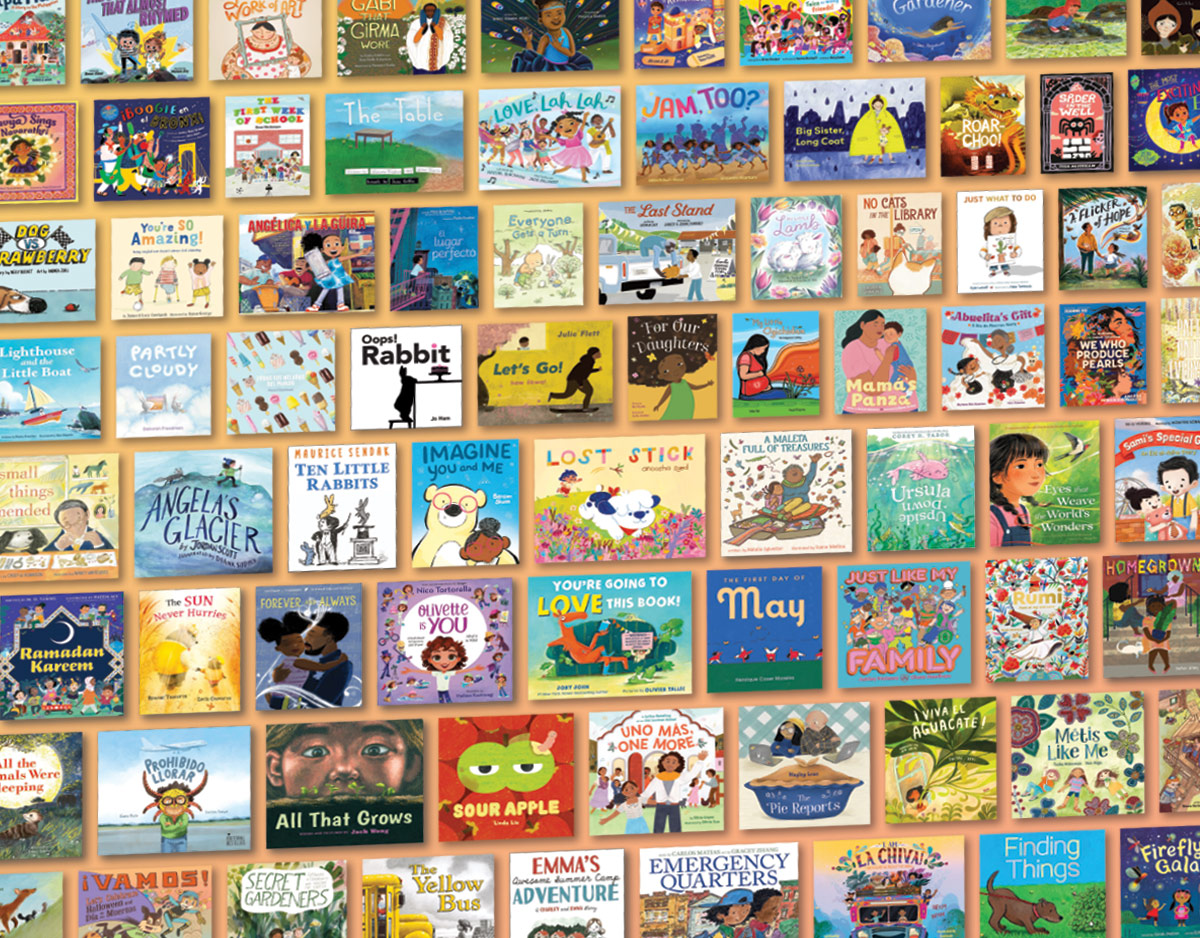
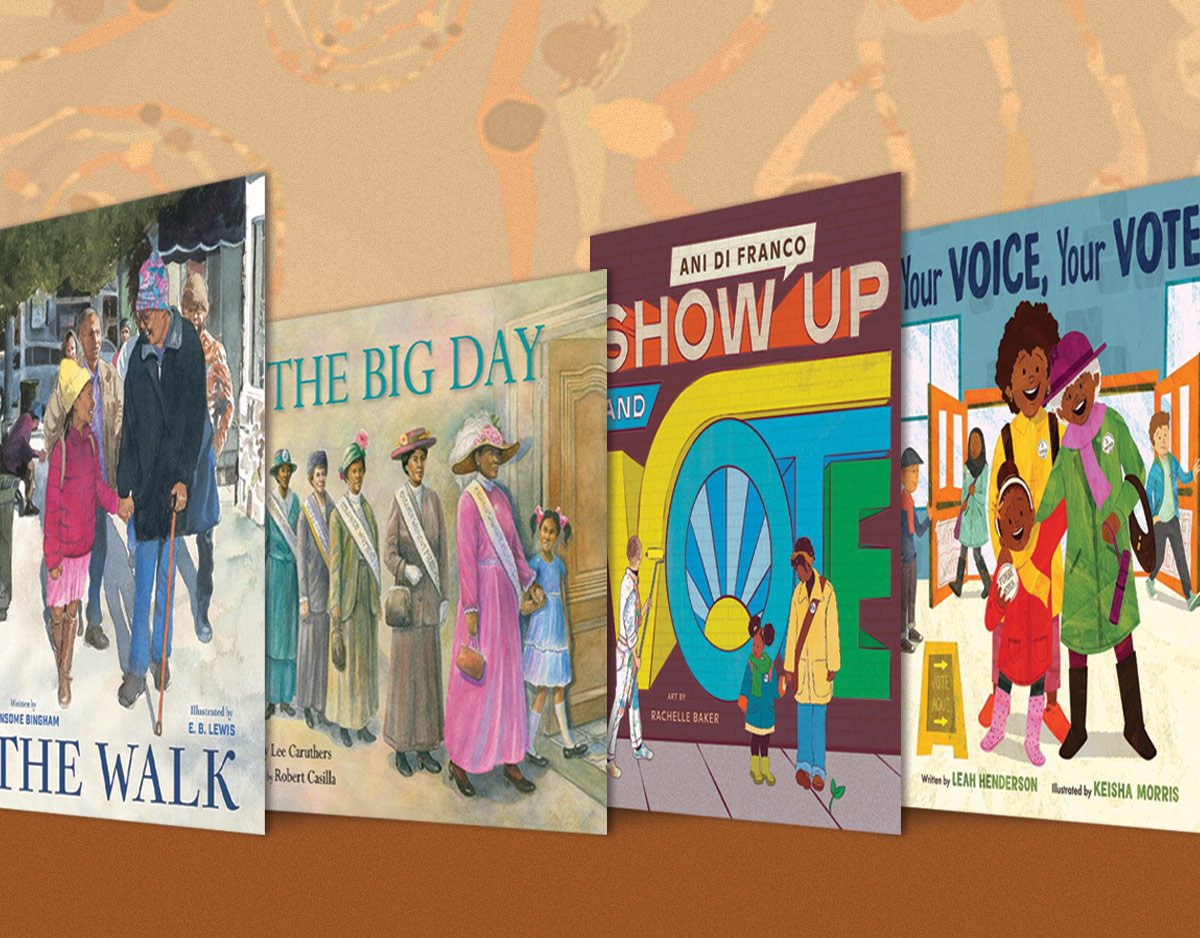
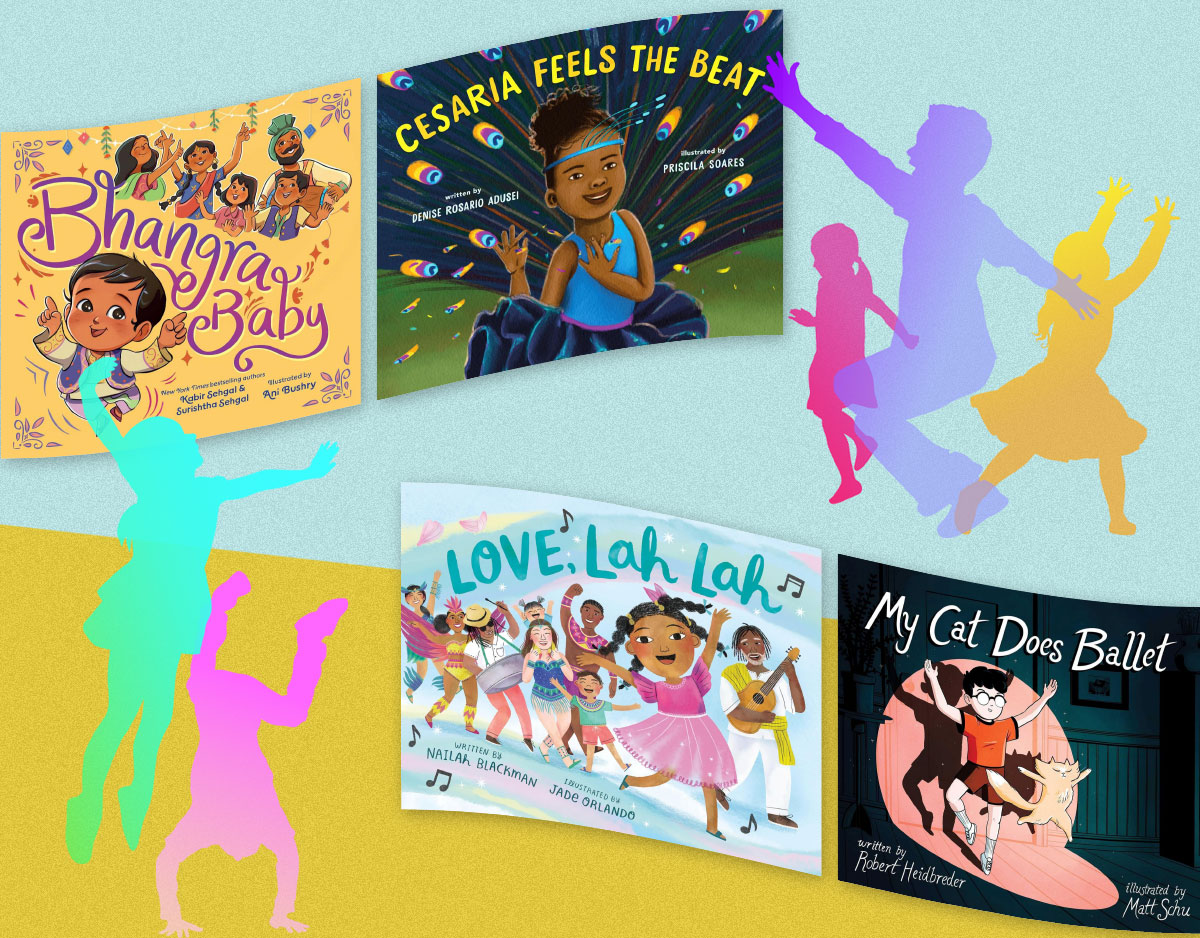
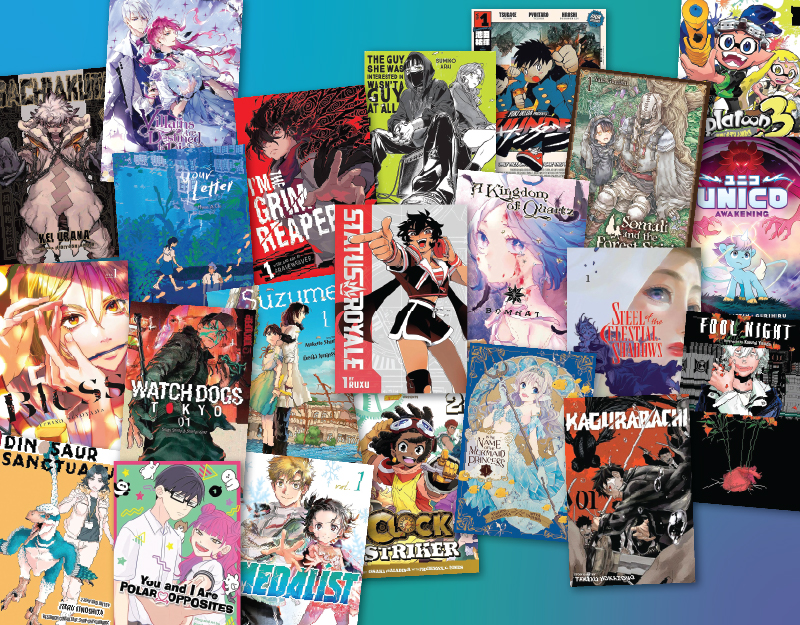
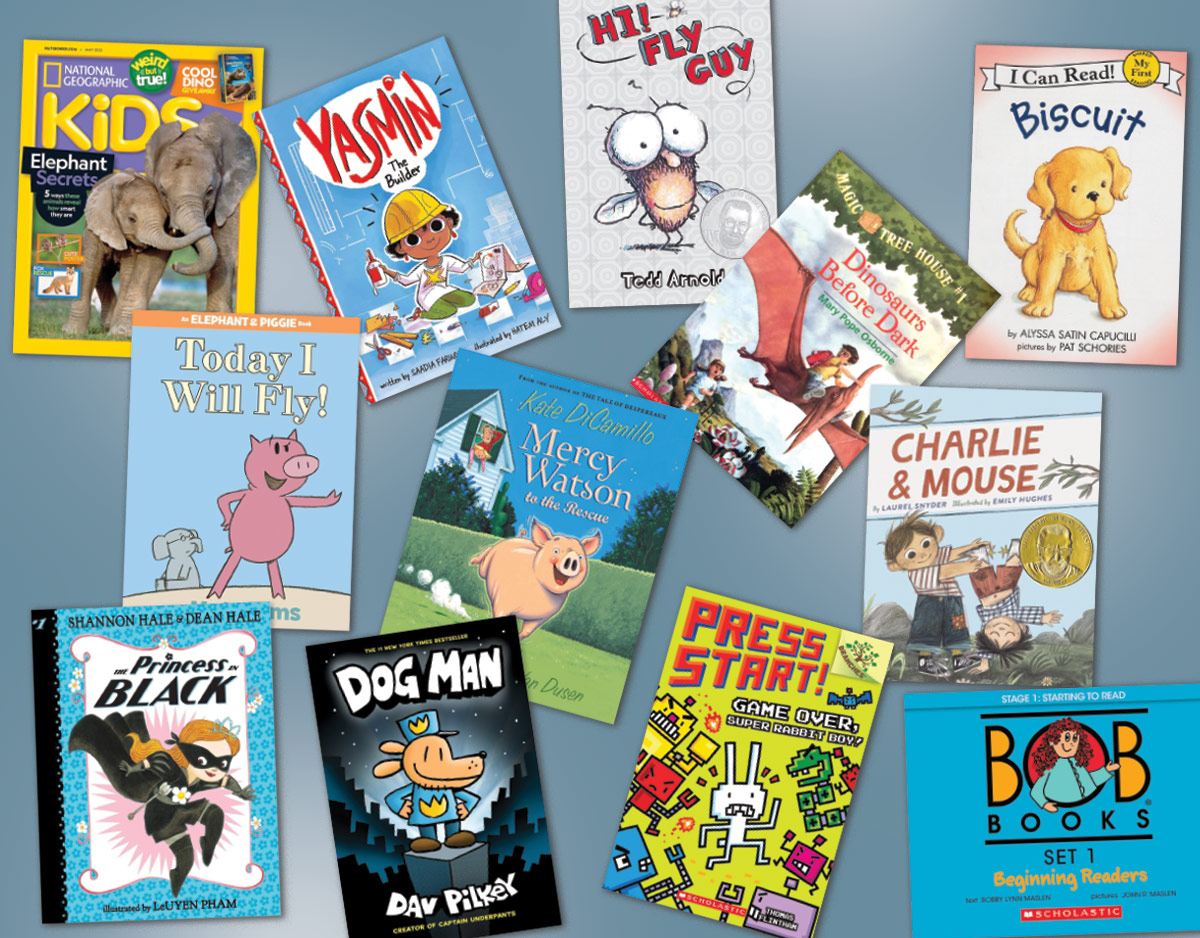
boy oh boy does this book get kids. LOVE.
Thanks for bringing this book to my attention–I had not heard about it! I grew up next door to our family’s funeral home and my father still works there nearly every day. Despite this, I have no simple answer for how the subject of “death” should be treated in a book for young kids– nor how best to talk to young kids about death. In the past, when humans lived in small, intimate clusters and close to animals, that education came naturally. Now Death has been warped and enlarged into something that stands apart from Life–and thus is a lot scarier than it’s ever been, for adults as well as kids. I think the best we can do is RESPECT the child’s own psychology and approach the subject within what he/ she can comprehend. Then, the discussion (and it’s best if it’s a discussion, not a lesson or sermon) can continue as the child matures and can grasp a wider sense of what it mean to “die.” I’ve not yet seen this book, but your very thorough review of it would suggest that this is exactly what it does!